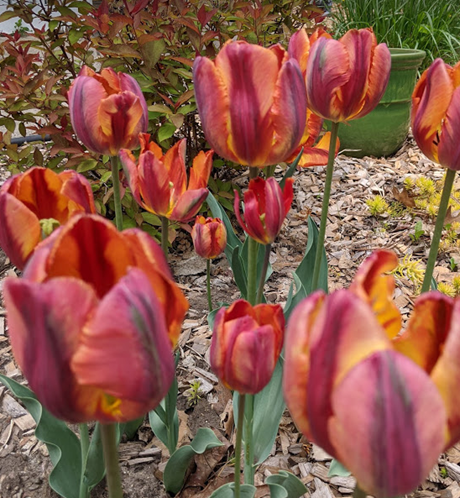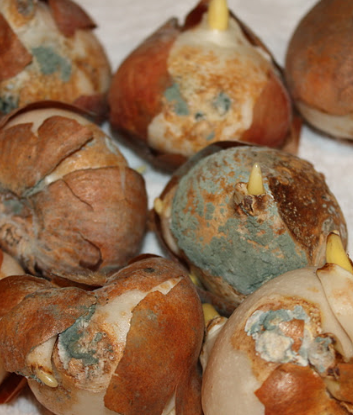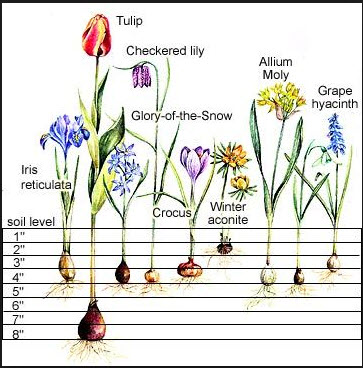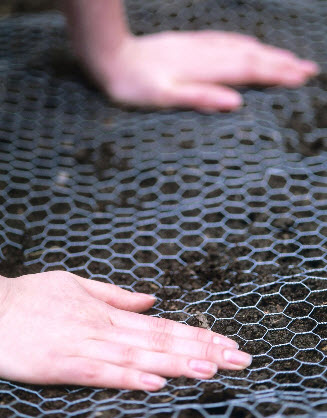Click below to listen to my 2 min. Garden Bite radio show/podcast: Ins and Outs of planting bulbs in Fall
As I teased you with tantalizing tulips and other Fall planted bulbs yesterday, I wanted to share the ins and outs of planting the various types of bulbs. First, remember to check to see what your local nurseries have to offer before you place an order.

Online sites, however, DO offer a wider variety than some of our local shops so if you don’t see what you want, that is an alternative.
Whether your bulbs are from an online order or your local nursery, it’s important to make sure you’re getting a good product.
When your bulbs arrive, inspect them immediately. Your bulbs, rhizomes, and corms should be firm. A little surface mold is fine but making sure there are no gushy areas is essential.

If you detect a bad odor or discover some mushy parts, then rush to your phone and call the company. Any reputable nursery will exchange them. This goes for bulbs you bought locally too.

Plant your bulbs as soon as you can to give them time to establish before winter sets in.
However, they can be stored for up to 2 weeks in a cool, dry place with the bag open to allow air circulation. Any longer than that and you might lose some viability.
Plant bulbs at the depth recommended on the package OR follow the chart

Most bulbs flower best in full sun, however, early bloomers can be planted under deciduous trees since they won’t leaf out before the flowers appear.
After planting your bulbs, water them in. You won’t see anything above ground till next Spring but don’t forget them. If there’s been no rain, give them a drink.
To deter squirrels, the most reliable way is to lay some chicken wire over the area or bird webbing. Just remove it before the bulbs start popping out of the soil in spring!

